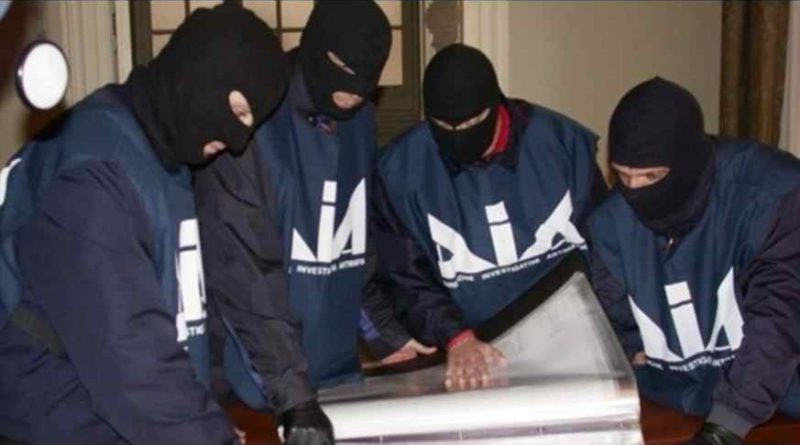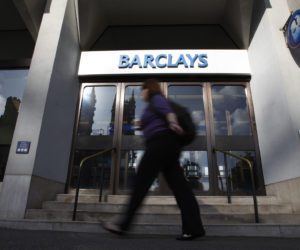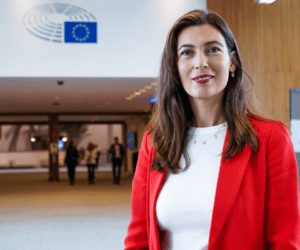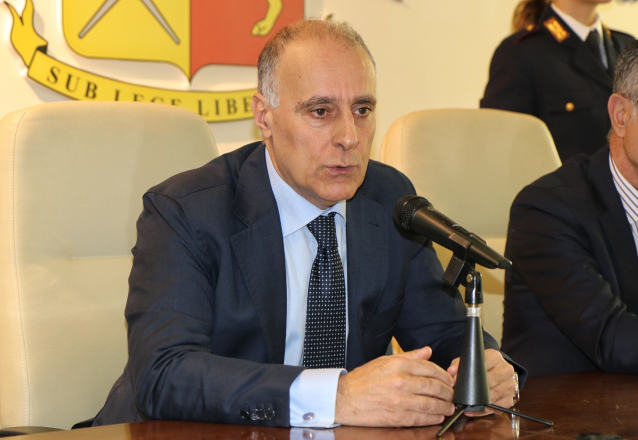INSIGHT: Sergio Nazzaro speaks to the director of the Italian’s government’s battle against the mafia, Maurizio Vallone. Long considered one of Italy’s greatest threats, organised crime in the country take on many forms, and has influences in industries like drugs, arms and human trafficking.
Sergio Nazzaro: The pandemic is posing new and complex challenges. Organised crime is creeping in during the emergency. What are the priorities facing the Anti-Mafia Investigative Directorate?
Maurizio Vallone: The Directorate’s mission is to fight organised crime, domestic or foreign.
WHAT IS THE ANTI-MAFIA INVESTIGATIVE DIRECTORATE
The Direzione Investigativa Antimafia (‘Anti-Mafia Investigation Directorate’), also known as DIA is a unique investigative body in Europe. It’s comprised of personnel from four Italian law enforcement offices:
- Polizia di Stato (State Police) –a domestic police force
- Arma dei Carabinieri – a military force providing domestic policing services
- Guardia di Finanza – responsible directly for financial crime and smuggling
- Polizia Penitenziaria – esponsible directly for prison matters
All four agencies are part of the directorate to specifically fight mafia-type organized crime.
Since the directorate’s beginnings in 1992, up till December 31, 2018, assets worth more than €17BN have been seized and confiscations were executed for almost €10BN. In addition, from 1992 to 2011, about 9,400 people suspected of mafia association were arrested. DIA’s work further intensified during the COVID-19 pandemic, and it recently concluded a “low profile” operation against the ‘ndrangheta [a prominent Calabria-based mafia organisation] with the arrest of nearly 50 people throughout Italy, the seizure of €100M and the identification of the illicit movements of €300M. The director of the DIA is Maurizio Vallone, former Chief of Police in the southern city of Reggio Calabria. In his career, he has worked against both the Sicilian Mafia and the Camorra, against the Casalesi clan.
The COVID-19 pandemic confronts us with three major challenges: the first is combating the attempts of criminal organisations to acquire public health sector contracts that are making investigations and controls more difficult.
The second is more effectively protecting public bodies from criminal organisations who exploit funds made available by the European Union – funds that were intended to revive the Eurozone economies.
The third, which currently causes the most concern, is aimed at safeguarding the national economic system. It is at risk because mafia organisations can afford to acquire Italian companies – large or medium-sized – which are in serious shortage of liquidity due to the reduction of activity during the pandemic.
In addition, the DIA is paying attention to a widespread phenomenon whereby the State is giving out pandemic compensation which, in some cases, has been acquired by people linked to organised crime, and were not entitled to it”.

THE GOAL OF THE MAFIA
SN: Too many times we have tried to distinguish between a sort of ‘old mafia’ with the coppola and lupara and a ‘new mafia’ formed by white collars. In your experience should the mafia not always be considered a white collar mafia that aim to inject the economy with dirty money?
MV: “The goal of the mafia is to accumulate wealth and power.
If in the past such accumulation happened with the power of intimidation and criminal prestige, by now mafia affiliates have learned to recycle their illicit proceeds in entrepreneurial sectors and distant territories.
If at one time the mafioso invested almost exclusively in the real estate or similar companies, for example agricultural; today, they are able to carry out complicated financial transactions using the most modern telematic instruments and have access to the sectors of international finance.
They do this either by using intermediaries, or directly through the skills acquired by the new generations of mafiosi, studying in Northern Italy or abroad.
In spite of this, the mafioso never removes “the coppola and the lupara”. He conceals them effectively and, when useful, he uses them to intimidate or subjugate.
THE GREATEST FEAR
SN: Your career has seen you arrest the authors of Libero Grassi’s murder and work on the investigations that led to the “Spartacus” trial against the Casalesi clan. What main transformations have you seen in the mafias through the decades, and what are the traits that most worry you?
MV: Many years have passed since the massacres in Palermo and Calabria. Since those bombings and horrific murders, it is clear to all of us, and to the mafiosi, that the strategy of massacre has turned out to be a very dangerous boomerang for the criminal organisations.
The greatest fear… is that mafia organisations, if not effectively countered, can infiltrate the economy so much that it is no longer possible to tell the healthy economy from the criminal one.
Also, settling scores between organisations, or within the same organisation, is by now typical only of disorganised criminality. It’s a sign of groups that are not mature from the criminal point of view, and whose mafia structures are not as evolved.
These criminal gangs are, for the most part, gangs of traffickers and drug dealers who make up only the criminal substratum of some areas of the country.
Above these subjects, however, move much more structured organisations. They manage international drug trafficking and the laundering of the huge profits.
They are able to master technologies and business techniques and have access to financial markets where they operate as major investors and financiers. The greatest fear, and the reason why the DIA dedicates time and resources to AML and SARs, is that mafia organisations, if not effectively countered, can infiltrate the economy so much that it is no longer possible to tell the healthy economy from the criminal one.
This would mean that we cannot cut off the criminal parts without also damaging the entire national economy.

SN: The globalization of the mafias is a fact. Their transnational capacity is also their strength. The DIA analyses and fights against mafias on this level, but at what point are we making other countries aware of the danger of mafias and above all, what is the state of cooperation between the various investigative bodies, especially in the European context?
MV: On August 15th 2007, in Duisburg, Germany, some members of a ‘ndranghetist cosca of San Luca (RC) carried out an attack at a bar of the German town, killing members of the rival cosca.
In a short time, investigations conducted in extraordinary synergy between the German and Italian police allowed us to shed light on the architects of the massacre and bring them all to justice.
I believe that event constitutes a watershed for the awareness of many European countries about the operation of Italian Organised crime in their territories. Since those years, police and judicial cooperation, also through Eurojust and other EU institutions, have taken important steps forward.
Today, international relations are bound by many regulations that allow border crossings in case of pursuit, the creation of SIC – Joint Investigation Teams between different Police Forces, international arrest warrants and other institutions that have facilitated multilateral investigative activities.
The DIA, thanks to EU funding, is the leader of the ONNET project, a communication network between 28 European and non-European countries, called @ON. It allows immediate exchanges of operational information to fund investigative missions in member countries.
The project is expanding continuously and has allowed us to support the investigative units of @ON Member States in 39 investigations. It has financed 131 operational missions in support of more than 567 investigators that have led to 222 arrests, as well as the seizure of about €2.5M, drugs and weapons.
Within the ICAN, the DIA is committed to the fight against the ‘ndrangheta on a global level, with the coordination of Interpol and on the initiative of the Central Directorate of the Criminal Police.
The project aims to raise awareness in all countries where the Ndrangheta operates. It will warn of the danger and pervasiveness of this mafia organisation by creating specialised units in each country. These will combat the Ndrangheta, they will channel all investigative activities against it, and act as a point of contact for foreign investigations.
WHERE ARE THE GREATEST THREATS?
SN: Before becoming Director of the DIA, you were Reggio Calabria’s Chief of Police. What are your thoughts on the criminal capacity of the ‘ndrangheta? And furthermore, which of the foreign mafias present in Italy do you consider to be the most dangerous?
MV: Even if it is the global leader in narcotics trafficking, the ‘ndrangheta no longer appears so monolithic and impermeable. For example, when affiliates, entrepreneurs and trades collaborate with the justice system.
“An increasing number of collaborations with the justice system is shattering that climate of silence and impenetrability.”
Until recently, they were forced into silence by the fear that the organisation imposed on them.

An increasing number of collaborations with the justice system is shattering that climate of silence and impenetrability. It’s a reality increasingly noticed by citizens who, in significant numbers, are now deciding to cooperate with the investigations, testifying their submission to mafia extortion.
This is also as a result of the determination amongst Prefects, and the entire Committee for Public Order and Security, to give witnesses effective protection, allowing them to continue to operate in their business activities in the same area, and not be transferred to protected locations.
This undermines the prestige of the Ndrine and its affiliates. And it constitutes a very important turning point in the fight against this criminal organisation.
On the other hand, since it comes from heterogeneous origins however, ethnic criminality represents a relevant and continuously growing component.
By now, numerous judicial pronouncements have recognised the typical call-signs of ethnicity-based organisations, both in structure and in the way they operate.
In this sense, the Court of Cassation has long known the makeup of Chinese structures, Nigerian cults, and more recently with regard to a Romanian structures also.
The core business of foreign groups in Italy is focused on drug trafficking, but it is also significant for size, and the danger of aiding and abetting illegal immigration. This can force women into prostitution, force both genders into illegal work, as well as begging.
The ethnic groups are also dedicated to trafficking weapons and counterfeit goods as well as crimes against property.
Now present in almost all regions, resident foreign criminal groups interact with Italian groups in different ways depending on the territory.
In the center-north, ethnic groups move independently, sometimes becoming dominant in a given territorial area. They can also agree with Italian criminals to operate on an equal footing or as an intermediary in the supply chain.
In southern regions, the ethnic groups operate in a subordinate way or with the consent of the local mafia, sometimes through the donation of a quantum.
This does not exclude the traditional mafia agreeing to operate on an equal level to foreign organisations in “business relations” for trafficking, especially in when considering arms and drugs.
In the drug trafficking sector, Albanian organisations are now fully established on the international scene.
This is because they are able to move large quantities of cocaine and heroin through the cooperation of colleagues in their homeland, in Central America and in other European countries, particularly the Netherlands.
They often promote themselves as reliable intermediaries, with the Calabrian, Campania and Sicilian mafia or with other criminal matrices. They are also involved in the management and shipment of huge loads of marijuana. Here, Albania is the producing country, often in agreement with the Apulian criminality.
The Nigerian cults play an important role in these criminal areas also. They are often opposed to each other, but united by a common modus operandi, which can be traced back to wodoo and ju-ju practices, used to coerce associates and young women who were recruited in Nigeria and neighbouring countries.
Many of the latter are forced into prostitution in Italy.
Several judicial inquiries reveal how the routes of human trafficking include well-defined stages, often coinciding with those of illegal arms, drug and tobacco trade: ‘connection houses’ in Libya are followed by ‘reception centres’ in Italy.
Share this on:
Follow us on:









